It’s been close to 12 months since China suspended imports of beef from Australia, and it’s hard to see how the ban would be relaxed anytime soon. In fact, the damage to Aussie red meat, valued at about A$3 billion, could be permanent. The exports of Australian beef to the Chinese market was the most lucrative agriculture export market – until May 2020.
The diplomatic spat started in May last year when China began what appeared to be its coordinate attacks against Australia by suspending imports from four largest Australian beef suppliers for 30 days (which never lifted), allegedly over labelling issues. The blacklisting of the red meat abattoirs – three in Queensland and one in New South Wales – was just the beginning.
Soon after the Kilcoy Pastoral Company, JBS’s Beef City and Dinmore from Queensland and Northern Cooperative Meat Company from New South Wales were suspended, another meat processor – Queensland’s John Dee – joined the bandwagon as the fifth Australian abattoir to be banned in China in August. An illegal drug, “chloramphenicol”, was found in the John Dee’s beef.
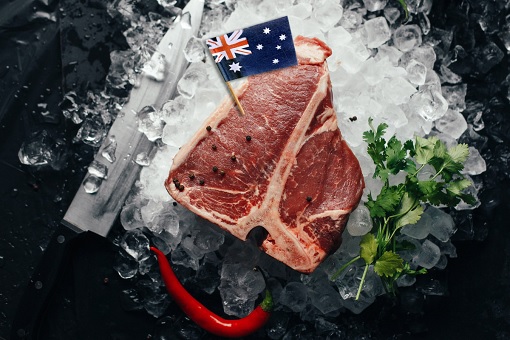
It was no coincidence that the suspension of the first four major Australian abattoirs came just 3 days after Beijing slapped a hefty 80.5% tariff on Australian barley. Sam McNiven, founder at Australian beef producer Providore Global, said – “Some politicians in Australia say too much, they need to stop this rhetoric with China, especially criticism and speculation regarding the origin of the Covid-19 virus.”
McNiven was referring to Prime Minister Scott Morrison, who started what appeared to be a silly pro-Trump campaign in April 2020, urging top allies France, Germany and New Zealand to pressure China to give the foreign countries the “weapons inspector-like” powers to investigate the Coronavirus outbreaks. That would be as good as an invasion, breaching the Chinese’s sovereignty.
Unimpressed, China mocked Australia of parroting U.S. President Donald Trump in its call for an inquiry to determine the origins of Covid-19, despite Morrison’s own admission that he had no evidence to suggest the disease originated in a laboratory in the Chinese city of Wuhan. Only Trump said he was convinced the virus may have originated in the Chinese virology lab.
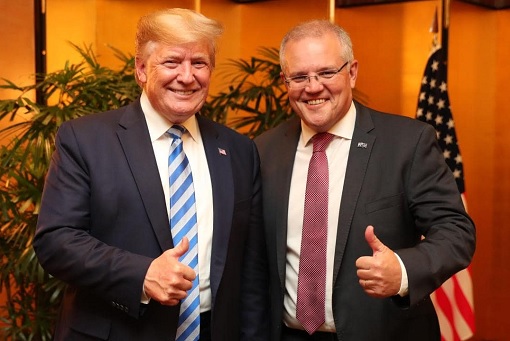
But Morrison had no interest of keeping his mouth shut. Hence, it was not surprising that the ban on the fifth Australian abattoir came as the Australian Prime Minister issues a chest-thumping pledge to tear up any state agreements with foreign governments that it deemed not in the national interest. John Dee, Australia’s oldest single family-owned abattoir, sold 30%-40% of its beef to China.
Likewise, the four meatworks first suspended by Beijing represent 35% of beef exports to China. The impact was obvious as the beef trade had been on track to reach A$3.5 billion in 2020, until PM Morrison provoked the country’s biggest trading partner. About one-third (38%) of Aussie’s total exports go to the Chinese, contributing A$150 billion annually and providing thousands of jobs.
Four months later, Australia’s Meramist Pty Ltd became the sixth beef supplier to be suspended by China in December last year. This round, Beijing did not even bother to provide any reason for the sudden ban. Mike Eathorne, the general manager of Meramist, told news media – “I was advised five minutes ago and I have been given absolutely no reasons”.
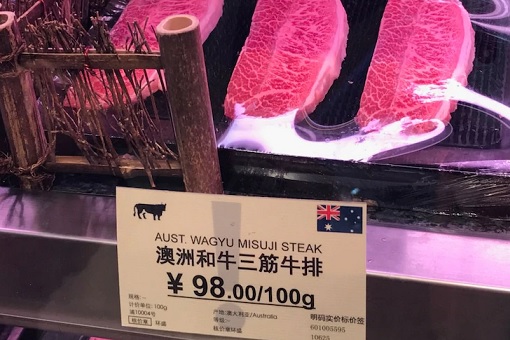
While Canberra desperately needs Beijing to sell its red meat, the same cannot be said about China. Australia was only China’s third largest beef supplier in 2019, after Brazil and Argentina. Unlike commodities such as iron ore, livestock farming can be reproduced relatively easily. Like Australian wine, the Aussie beef is considered premium products in Chinese restaurants.
But trade disruptions also mean the Australian beef, which was normally sold 50% more than South American beef, will suffer heavy losses. To make matters worse, the pork supplies are recovering “much faster than expected” after the world’s largest hog herd was devastated by an epidemic of African swine fever, which practically wiped off half of 440-million pigs in China.
Australia may think it is unique and has overestimated its importance, and that its premium beef is indispensable. But at least 60 countries actually count China as their No.1 export market. As Australia is forced to find new customers, other countries – Russia, Indonesia, South Korea, Argentina, Brazil, and even the US – happily jumped in to fill the void in the world’s largest market.
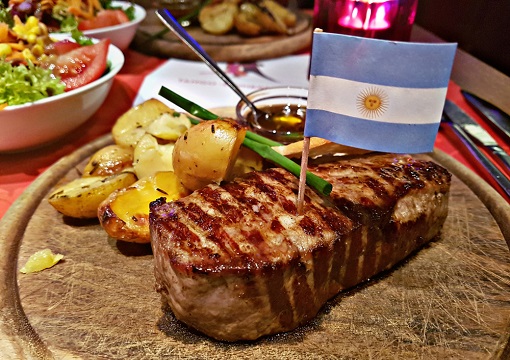
To replace Australian so-called premium beef products, Carne Hereford S.A., a company founded by main breeders in Argentina, has started a joint venture with beef-supply-chain platform BeefLedger and Shenzhen-based importer Australasia (Guangzhou) Food to export premium beef into the Chinese market. BeefLedger’s block-chain technology is being used to provide premium brand like Aliarg .
Despite the pandemic, Argentina’s beef exports to China increased by 8.5% in 2020, accounting for 75% of its beef exports world-wide. Still, the nation’s market share in China has remained relatively stable at 23%. It’s neighbouring Brazil, meanwhile, was the biggest winner when it supplied 43% of China’s meat imports in 2020 – a huge jump from 22% the previous year.
Brazilian beef is already highly price competitive, with prices per tonne lower than Australia and New Zealand in dollar terms even before China launches its trade war against Australia. The plunging Brazilian currency along with weak domestic demand has made the red meat from the country even more affordable. In fact, Brazilian meat is among the cheapest in the world.
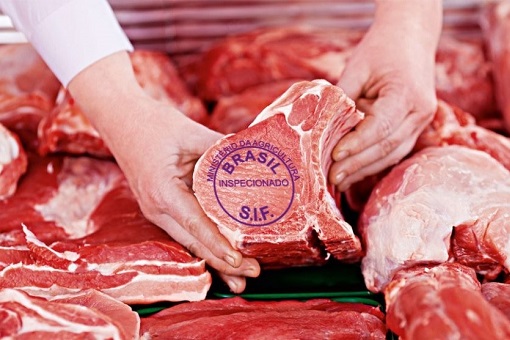
Since 2019, China has strategically granted licenses to 22 Brazilian slaughterhouses for exports. With Australian abattoirs waiting aimlessly to resume its export to China, the world’s second largest economy continues to be the biggest customer for South American supply, accounting for more than 70% of the region’s beef exports, and about 60% of Brazil’s.
Even Uruguay, the second smallest country in South America, is fast expanding its market share that saw 55% of its beef being exported to China. The Chinese market is so important and lucrative that the National Meat Institute of Uruguay (INAC) wanted to establish an office in Beijing specifically to better promote Uruguayan meat exports in China.
Australia naively thought it could rely on other countries like Indonesia, Japan, South Korea, Vietnam and India to reduce its dependency on the Chinese market. However, those countries are not even among Australia’s top ten trading partners. Despite Japan becomes Australia’s single largest export customer by volume as a result of China’s boycott, the export to Japan still dropped by 6% in 2020.
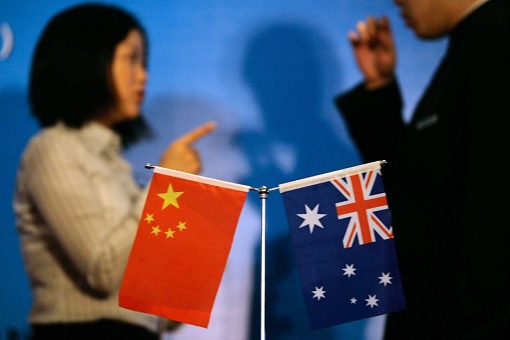
Similarly, Aussie’s beef exports to South Korea, Middle East and Taiwan plunged by 1.5%, 8% and 12% respectively in 2020. Beef exports to Southeast Asia declined 12% last year (Indonesia, Philippines and Vietnam contracted by 17%, 20% and 10%, respectively). The European Union’s import of Australian beef reached its lowest point in more than a decade, at 8,525-tonnes, down from 14,000-tonnes a year earlier.
Surprisingly, the U.S., supposedly Australia’s biggest ally, did not help much. The U.S., despite becoming Australia’s second largest market in 2020, imported only 211,000-tonnes of beef for the year 2020, a 16% decline from the previous year (2019). Instead, the U.S. took advantage of China-Australia soured relations to increase American beef to China by a whopping 271% year over year in 2020.
Obviously, Canberra had made the biggest mistake when it foolishly and inappropriately poked at the dragon. Australian beef exporters have every reason to be worried. Other meat producers have taken its place at lightning speed to supply red meat to the Chinese – at a cheaper price. All countries, including the U.S., have benefited from the China’s boycott of Aussie beef.
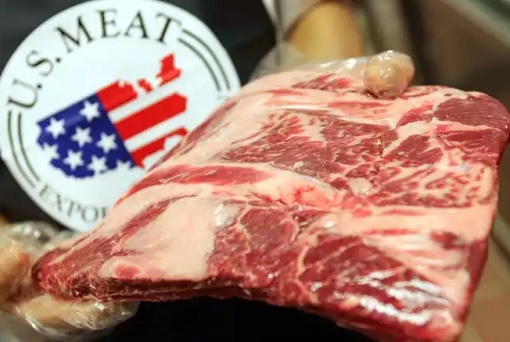
Other Articles That May Interest You …
- Australia’s $1 Billion Wine Industry In Trouble – China Officially Slaps 218.4% Import Duties For 5 Years Effective Sunday
- Australia’s Treasury Wine Forced To Sell Brands & Assets – Profit Suffers 43% Drop After China’s Tariffs Punishment
- China Will Import Coal From Any Country, Except Australia – PM Morrison Upset Over Impact On The A$14 Billion Industry
- Australia Hopes RCEP Will Fix Problems With China – But It Gets Worse As Beijing Reveals Three Issues With Canberra
- Australia’s Economy Being Hit Again – China Bans Wheat, Lobster, Barley, Sugar, Wine, Timber, Coal, Copper
- China Punish Australia Again – Recession-Hit Aussie Saw Its A$2 Billion Cotton Industry Targeted
- Australia Upset! – China Now Uses “Asian Discrimination” To Target Aussie’s A$38 Billion Education Industry
- Coronavirus Inquiry Backfired On Aussie – China Slaps Tariffs, Warns It Has The Power To Hurt Australia Economy
- Lawsuits For Trillions Of Dollars Against China Over Spread Of Coronavirus – Here’s Why It’s A Waste Of Time
- 3 Coronavirus Variants Discovered – Surprisingly, “Type-A” Found In Americans, Wuhan’s Type-B And Type-C In Europe

|
|
April 19th, 2021 by financetwitter
|


|

|

|

|

|

|




























“…May Not Recover – Permanently & Completely”
Should be emphasised to the outback glorified convicts as “not even after the cows come home”!
The great loss of sale to the Chinese has a positive side: beef from Ozland may no longer be available to middle-class Chinese – but it can become cheap for the poorer convicts of Ozlandia!
Ozland’s future partner for the conquest of China may be pleased, India would rejoice less moos would be chopped up for their enemies dinner plates, it’s a victory of sort, already.
I would avoid Japanese beef, those that are washed down with sake in particular, the water used in sake is often from the areas around glowland Fukushima.
I would recommend Argentinian beef which I vastly prefer to Oz’s, the Argies may yet find a great market in China, yet another reason for the always-starving vegetarian Indians to liberate the moos in China – or at least from the frozen departments of supermarkets… medium rare for me , please, *burp* *fart*